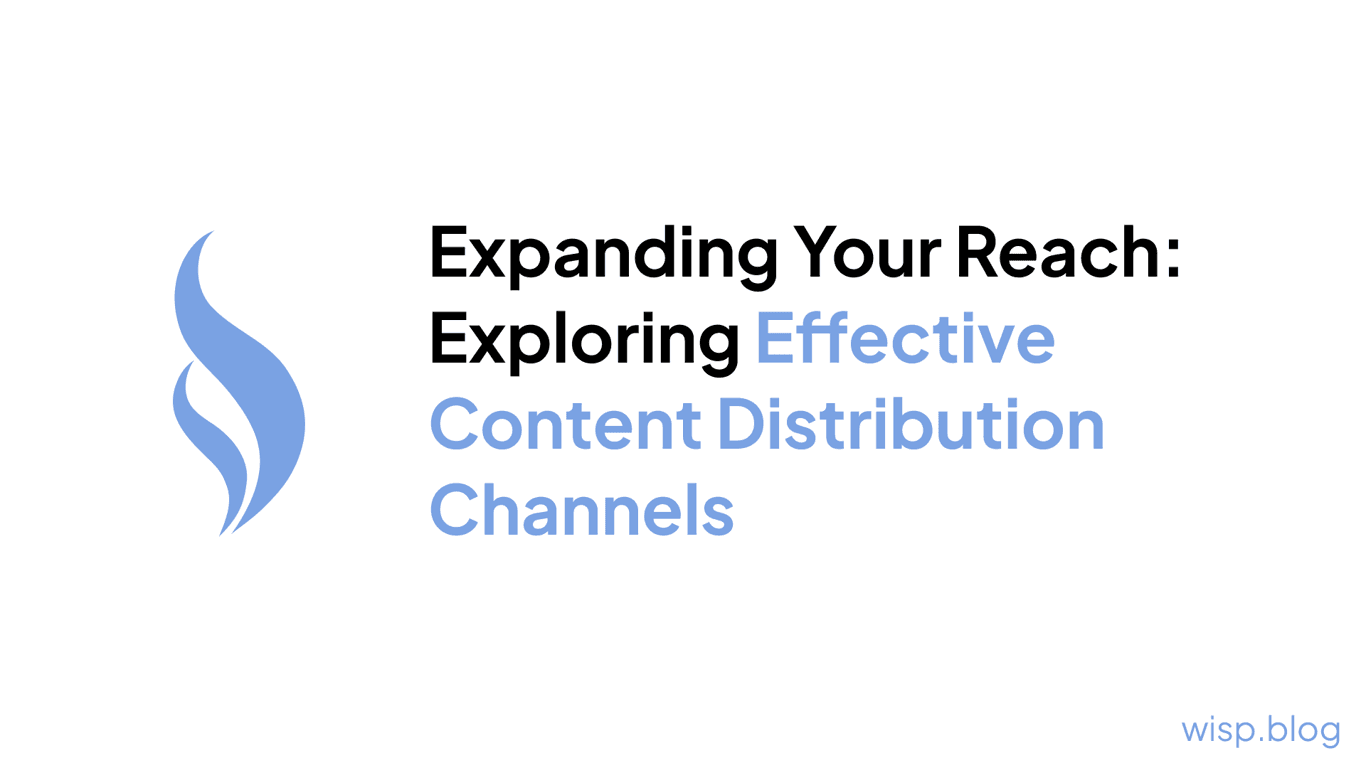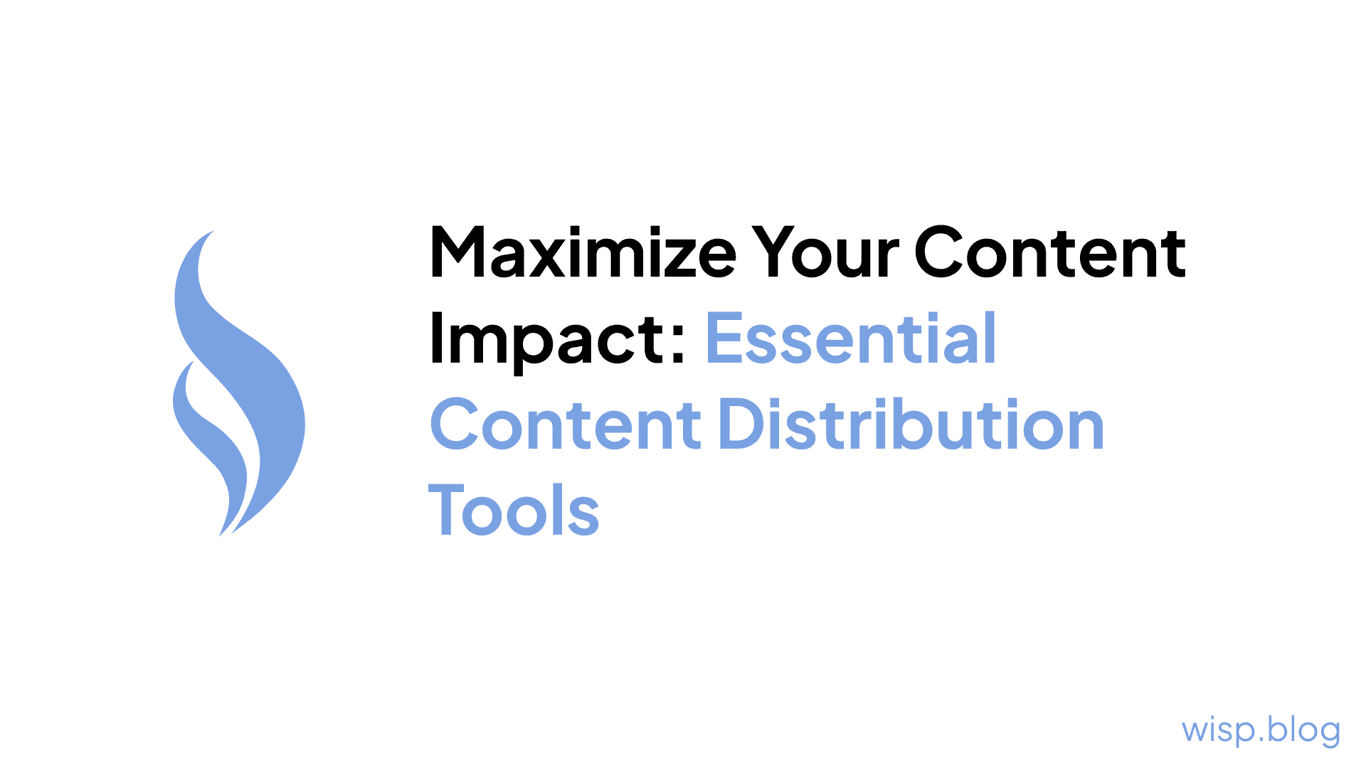
Understanding Content Distribution Networks
To effectively reach a wider audience and optimize content performance, it's important to understand the concept of Content Distribution Networks (CDNs) and how they can enhance the distribution of your content.
What are Content Distribution Networks (CDNs)?
Content Distribution Networks, commonly referred to as CDNs, are a network of servers strategically distributed across various locations worldwide. These servers work collaboratively to deliver content to end-users in a fast and efficient manner. CDNs act as intermediaries between content publishers and consumers, reducing latency and improving loading speed.
CDNs store cached versions of content, such as images, videos, and other static files, in multiple server locations. When a user requests access to a particular piece of content, the CDN identifies the closest server and delivers the content from that server, minimizing the distance the data needs to travel. This process ensures faster content delivery and an improved user experience.
How CDNs Enhance Content Reach and Performance
CDNs offer several benefits that enhance content reach and performance. By leveraging the power of CDNs, content publishers can take advantage of the following:
Improved Website Loading SpeedOne of the primary advantages of CDNs is the significant improvement in website loading speed. By caching and delivering content from servers located closer to the end-users, CDNs reduce latency and minimize the time it takes for content to reach the user's device. This faster loading speed not only enhances user experience but also improves search engine rankings, as search engines prioritize websites with faster load times.
Enhanced User ExperienceCDNs play a critical role in enhancing user experience by ensuring that content is readily available and accessible to users, regardless of their geographical location. By storing cached versions of content in multiple server locations, CDNs minimize the impact of latency and network congestion, resulting in a smoother and more seamless content delivery experience.
Scalability and ReliabilityCDNs offer scalability and reliability by reducing the burden on origin servers. With CDNs, content publishers can handle high traffic volumes and sudden spikes in demand without overloading their servers. CDNs distribute the load across their network of servers, ensuring that content remains accessible and responsive even during peak periods.
By implementing CDNs in your content strategy, you can effectively optimize content distribution, improve website performance, and provide a superior user experience. To learn more about different content distribution strategies and channels, check out our articles on content distribution strategies and content distribution channels.
In the next section, we will explore the process of implementing CDNs in your content strategy and discuss how to choose the right CDN provider to maximize the benefits of content distribution.
Benefits of Utilizing CDNs
Content Distribution Networks (CDNs) offer several benefits that can significantly enhance your content marketing efforts. By utilizing CDNs, you can supercharge your reach and improve the performance of your content. Let's explore some key advantages of incorporating CDNs into your content strategy.
Improved Website Loading Speed
One of the primary benefits of utilizing CDNs is the improved website loading speed. CDNs work by distributing your content across multiple servers located in different geographic locations. When a user requests your content, the CDN delivers it from the server closest to their location. This reduces the distance the content needs to travel, resulting in faster loading times.
Faster website loading speed is crucial for providing a positive user experience. Research shows that users are more likely to abandon a website if it takes too long to load. By leveraging CDNs, you can ensure that your content loads quickly, keeping your visitors engaged and reducing bounce rates.
Enhanced User Experience
In addition to faster loading speeds, CDNs also contribute to an enhanced user experience. With CDNs, your content is delivered from servers that are geographically closer to your target audience. This reduces latency and minimizes delays in content delivery, resulting in a seamless browsing experience.
CDNs also have the ability to handle high traffic volumes efficiently. By distributing content across multiple servers, CDNs can handle a larger number of simultaneous requests without experiencing performance issues. This scalability ensures that your website remains accessible and responsive even during peak traffic periods.
Scalability and Reliability
CDNs provide scalability and reliability, making them an ideal choice for content distribution. As your website or blog grows and attracts more visitors, CDNs can handle the increased traffic without compromising performance. CDNs are designed to handle heavy loads and can easily scale to accommodate your growing audience.
Moreover, CDNs offer high levels of reliability. By distributing content across multiple servers, CDNs reduce the risk of server failures or downtime. Even if one server experiences an issue, the CDN can automatically route requests to an alternative server, ensuring uninterrupted content delivery.
To maximize the benefits of CDNs, it's important to choose the right CDN provider that aligns with your specific needs. Evaluate factors such as their network coverage, performance, and customer support. Additionally, integrating CDNs with your website or blog is a crucial step in harnessing their potential. Consult with your web development team to seamlessly integrate CDNs into your existing infrastructure.
Incorporating CDNs into your content distribution strategy offers numerous advantages, including improved website loading speed, enhanced user experience, and scalability. By optimizing the delivery of your content, CDNs can help drive traffic, engage your audience, and ultimately contribute to the success of your content marketing efforts.
Implementing CDNs in Your Content Strategy
To harness the full potential of content distribution networks (CDNs), it's important to integrate them effectively into your content strategy. This involves choosing the right CDN provider and seamlessly integrating CDNs with your website or blog.
Choosing the Right CDN Provider
When selecting a CDN provider, it's crucial to consider your specific needs and goals. There are several factors to evaluate to ensure you make an informed decision:
Geographic Coverage: Assess the CDN provider's network of servers and their global reach. Look for providers with server locations that align with your target audience to optimize content delivery speed.
Network Performance: Evaluate the CDN provider's network performance, including their server response time and uptime. A reliable CDN should have a robust infrastructure capable of handling traffic spikes and ensuring smooth content delivery.
Cost and Pricing Model: Consider your budget and compare pricing models offered by different CDN providers. Some providers charge based on bandwidth usage, while others offer fixed plans. Choose a pricing model that aligns with your expected traffic and content delivery requirements.
Security Features: Ensure that the CDN provider offers robust security features, such as DDoS protection, SSL encryption, and content integrity checks. This helps safeguard your content and protect your website from potential threats.
Analytics and Reporting: Look for CDN providers that offer comprehensive analytics and reporting tools. These insights can help you track the performance of your content, identify areas for improvement, and make data-driven decisions to optimize your content distribution strategy.
Remember to conduct thorough research, read reviews, and compare different CDN providers to select the one that best fits your specific requirements.
Integrating CDNs with Your Website or Blog
Once you've chosen a CDN provider, the next step is to seamlessly integrate CDNs with your website or blog. This integration ensures that your content is distributed efficiently to your audience. Follow these steps to integrate CDNs effectively:
Content Offloading: Identify the static elements of your website or blog, such as images, CSS files, and JavaScript files. Offload these static elements to the CDN servers, reducing the load on your origin server and improving overall website performance.
CDN Configuration: Work with your CDN provider to configure the necessary settings for proper integration. This involves setting up a CDN subdomain or CNAME record to map your website's domain to the CDN servers.
URL Rewriting: Update the URLs of the offloaded content to ensure they point to the CDN servers. This ensures that when users access your website or blog, the CDN delivers the static content from the closest server location, minimizing latency and improving loading times.
Testing and Monitoring: After integration, thoroughly test your website or blog to ensure that all content is being delivered through the CDN. Monitor the performance of your content using analytics tools provided by your CDN provider. This allows you to track metrics such as page load times, bandwidth usage, and user engagement.
By carefully choosing the right CDN provider and seamlessly integrating CDNs with your website or blog, you can optimize content delivery, improve user experience, and enhance the overall performance of your content distribution strategy.
Effortlessly Serve Your Content with wisp's Cutting-Edge CDN Integration
wisp is a headless CMS designed to seamlessly integrate with Next.js websites, making it easy to add a powerful blog to your application. One of the key features of wisp is its tight integration with Cloudflare's global CDN, ensuring lightning-fast content delivery to your audience worldwide.
Under the hood, wisp leverages Cloudflare's edge computing capabilities to serve your blog posts and images from the nearest edge server to your readers. This cutting-edge technology minimizes latency and ensures that your content loads almost instantly, providing an exceptional user experience.
But that's not all – wisp also takes care of image optimization and delivery through Cloudflare's massive content network. When you upload images to your blog posts, wisp automatically optimizes them for the web and serves them through Cloudflare's CDN, ensuring that your readers enjoy crisp, high-quality visuals without compromising on performance.
With wisp, you can focus on creating compelling content while we handle the technical complexities of content distribution and optimization. Our seamless integration with Cloudflare's CDN means that you can rest assured that your blog posts and images will be delivered quickly and efficiently to your audience, no matter where they are located.
Try out our blazing fast blogging platform today
Maximizing the Potential of CDNs
To fully leverage the power of Content Distribution Networks (CDNs), it's crucial to optimize content delivery and tap into their potential for global reach. By implementing effective strategies, you can maximize the benefits of CDNs and ensure the efficient distribution of your content.
Optimizing Content Delivery
Optimizing content delivery is essential for ensuring that your audience receives your content quickly and seamlessly. Here are some key considerations to optimize content delivery through CDNs:
Caching: CDNs utilize caching technology to store and deliver static content closer to end-users. By caching your content across multiple servers located strategically around the world, CDNs can minimize latency and reduce the load on your origin server.
Compression: Compressing your content before delivery helps to reduce file sizes and improve loading speed. CDNs often incorporate compression techniques, such as Gzip, to further enhance content delivery efficiency.
Image Optimization: Images are vital for engaging content, but they can also significantly impact loading times. Optimize images by compressing them without compromising quality. CDNs can automatically resize and compress images on-the-fly, ensuring optimal delivery to users.
Minification: Minifying your HTML, CSS, and JavaScript files by removing unnecessary characters, comments, and whitespace can reduce file sizes and improve load times. CDNs often provide automated minification services, allowing you to optimize your code without manual intervention.
Leveraging CDNs for Global Reach
One of the significant advantages of CDNs is their ability to extend content reach globally. By leveraging CDNs, you can ensure that your content is readily available to users around the world, regardless of their geographical location. Here's how you can maximize CDNs for global reach:
Edge Server Placement: CDNs have a network of edge servers located in various geographical regions. By strategically placing your content on these servers, you can bring your content closer to your target audience, minimizing latency and improving the overall user experience.
Global Load Balancing: CDNs employ global load balancing techniques to distribute content requests across their network of servers. This helps to ensure that users are directed to the nearest available server, reducing latency and optimizing content delivery.
Content Replication: CDNs replicate your content across multiple edge servers, allowing for redundancy and improved reliability. This replication ensures that content is readily available even if one server experiences issues or high traffic volumes.
Geo-Targeting: CDNs can deliver personalized content based on users' geographical locations. By leveraging geo-targeting capabilities, you can tailor your content to specific regions or countries, providing a localized experience for your global audience.
By optimizing content delivery and harnessing CDNs for global reach, you can enhance the performance and availability of your content to a wider audience. CDNs play a crucial role in the success of your content distribution strategy, enabling efficient delivery and ensuring a seamless user experience.
Measuring Success with CDNs
Implementing a Content Distribution Network (CDN) can have a significant impact on your content marketing strategy. To gauge the effectiveness of CDNs and optimize your efforts, it's essential to measure key performance metrics and analyze the impact on traffic and engagement.
Key Performance Metrics to Track
Tracking key performance metrics helps you understand the effectiveness of your CDN implementation. Here are some important metrics to consider:
Website Loading Speed: Measure the average page load time before and after implementing a CDN. A faster loading speed indicates improved performance and a better user experience.
Bandwidth Usage: Monitor the bandwidth consumption of your website or blog. CDNs can help reduce the load on your origin server by distributing content, resulting in lower bandwidth usage.
Cache Hit Rate: Assess the percentage of requests served by the CDN's cache instead of the origin server. A higher cache hit rate signifies effective content delivery and reduced server load.
Uptime and Availability: Monitor the uptime and availability of your website or blog. CDNs enhance reliability by distributing content across multiple servers, reducing the risk of downtime.
Geographic Coverage: Analyze the geographic reach of your content. CDNs improve global content delivery, allowing you to reach audiences in different regions more effectively.
Analyzing the Impact of CDNs on Traffic and Engagement
CDNs can have a positive impact on traffic and engagement metrics. Here's how to analyze their impact:
Website Traffic: Compare website traffic before and after implementing the CDN. If you observe an increase in traffic, it indicates that the CDN has improved content delivery and attracted more visitors.
Bounce Rate: Analyze the bounce rate of your website. A lower bounce rate suggests that the CDN has enhanced the user experience, enticing visitors to explore your content further.
Page Views: Monitor the number of page views your website receives. A higher page view count indicates increased engagement and a higher probability of visitors consuming more of your content.
Average Session Duration: Measure the average time visitors spend on your website. If the average session duration increases after implementing a CDN, it signifies improved engagement and interest in your content.
Conversion Rate: Assess the impact of CDNs on conversion rates, such as newsletter sign-ups or product purchases. A higher conversion rate suggests that the CDN has contributed to improved user experience and increased conversions.
By tracking these metrics and analyzing the impact of CDNs on traffic and engagement, you can refine your content distribution strategy and optimize the performance of your website or blog. Remember to regularly evaluate these metrics to ensure that your CDN implementation continues to deliver the desired results.
Future Trends in Content Distribution
As technology continues to advance, content distribution networks (CDNs) are also evolving to meet the changing needs of content marketers. In this section, we will explore the evolving technologies in CDNs and discuss the role of CDNs in the future of content marketing.
Evolving Technologies in CDNs
CDNs are continuously adopting new technologies to improve content delivery and provide a seamless user experience. Some of the evolving technologies in CDNs include:
Edge Computing: Edge computing is a technology that brings computation and data storage closer to the user, reducing latency and improving the overall performance of CDNs. By processing data at the edge of the network, CDNs can deliver content faster and more efficiently.
Artificial Intelligence (AI): AI is playing an increasingly important role in CDNs. AI algorithms can analyze data in real-time, enabling CDNs to make intelligent decisions about content delivery. With AI, CDNs can optimize content distribution based on user preferences, device capabilities, and network conditions.
Internet of Things (IoT): The proliferation of IoT devices is creating new challenges and opportunities for CDNs. CDNs are adapting to support the growing number of IoT devices, ensuring efficient content delivery to these devices. This includes delivering content to smart home devices, wearable devices, and other IoT endpoints.
Blockchain: Blockchain technology is being explored in CDNs to enhance security and transparency. By utilizing blockchain, CDNs can ensure the integrity of content delivery, prevent tampering, and provide a decentralized and trustless system for content distribution.
These evolving technologies in CDNs are paving the way for improved content delivery and opening up new opportunities for content marketers to reach their target audience effectively.
The Role of CDNs in the Future of Content Marketing
CDNs have already revolutionized content distribution, and their role in content marketing will continue to be crucial in the future. Here's how CDNs will shape the future of content marketing:
Global Reach: CDNs enable content to be distributed globally, ensuring that it reaches audiences in different regions effectively. With the increasing globalization of markets, CDNs will play a vital role in helping content marketers expand their reach and engage with diverse audiences.
Personalized Content Delivery: As CDNs adopt AI technologies, personalized content delivery will become more prevalent. CDNs will leverage user data and AI algorithms to deliver content tailored to individual preferences, enhancing the user experience and increasing engagement.
Real-Time Analytics: CDNs will continue to provide real-time analytics on content performance, allowing content marketers to gather insights and make data-driven decisions. These analytics will help marketers understand user behavior, optimize content distribution strategies, and improve overall content marketing effectiveness.
Multi-Platform Content Delivery: With the increasing number of devices and platforms, CDNs will play a crucial role in delivering content across various channels. Whether it's web, mobile, IoT devices, or emerging platforms, CDNs will ensure seamless content delivery to provide a consistent user experience.
Content marketers who embrace CDNs and stay updated with these future trends will have a competitive advantage in reaching their target audience and driving engagement. By leveraging the evolving technologies and capabilities of CDNs, content marketers can supercharge their content distribution strategies and effectively navigate the ever-changing landscape of content marketing.



